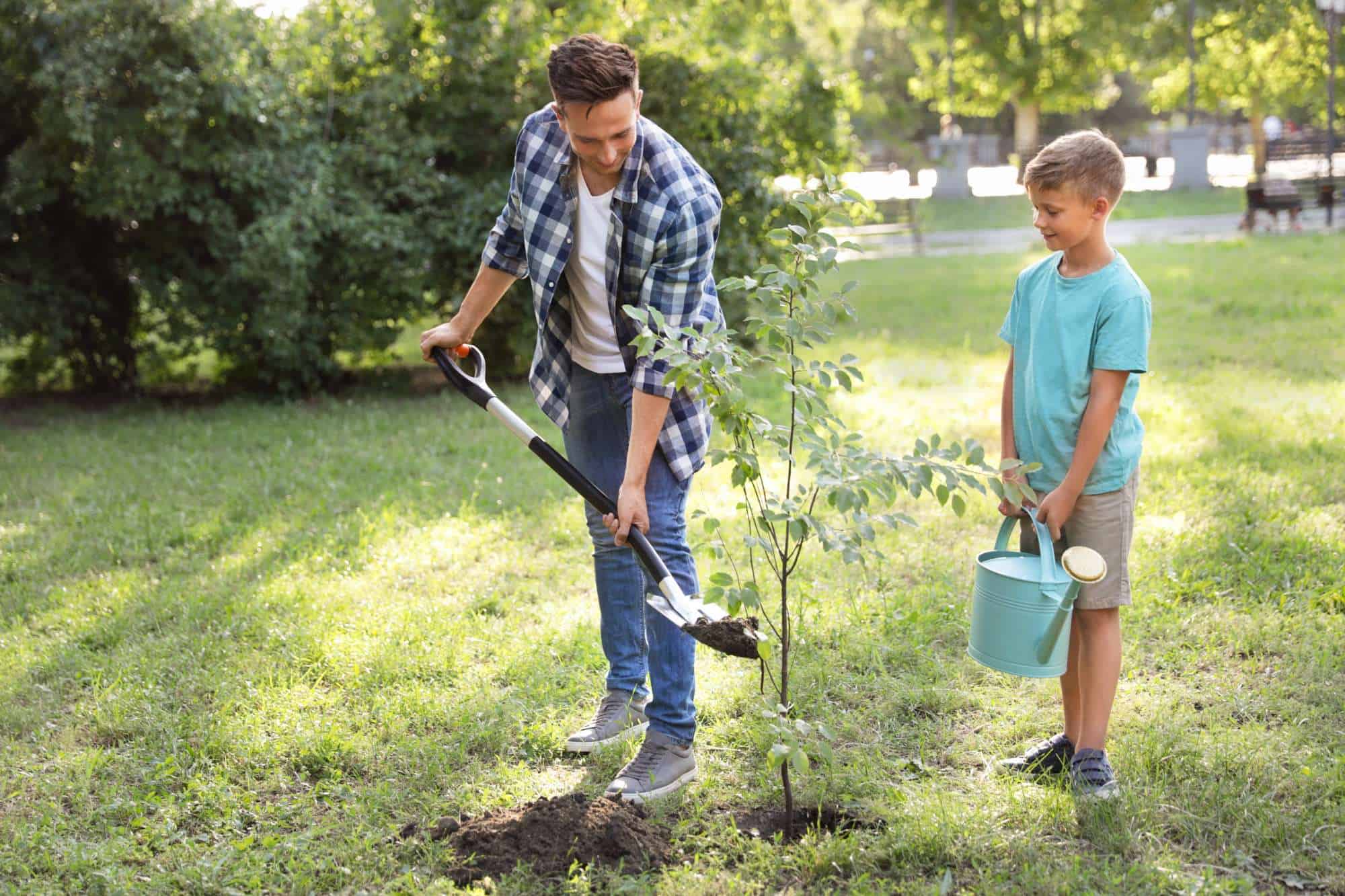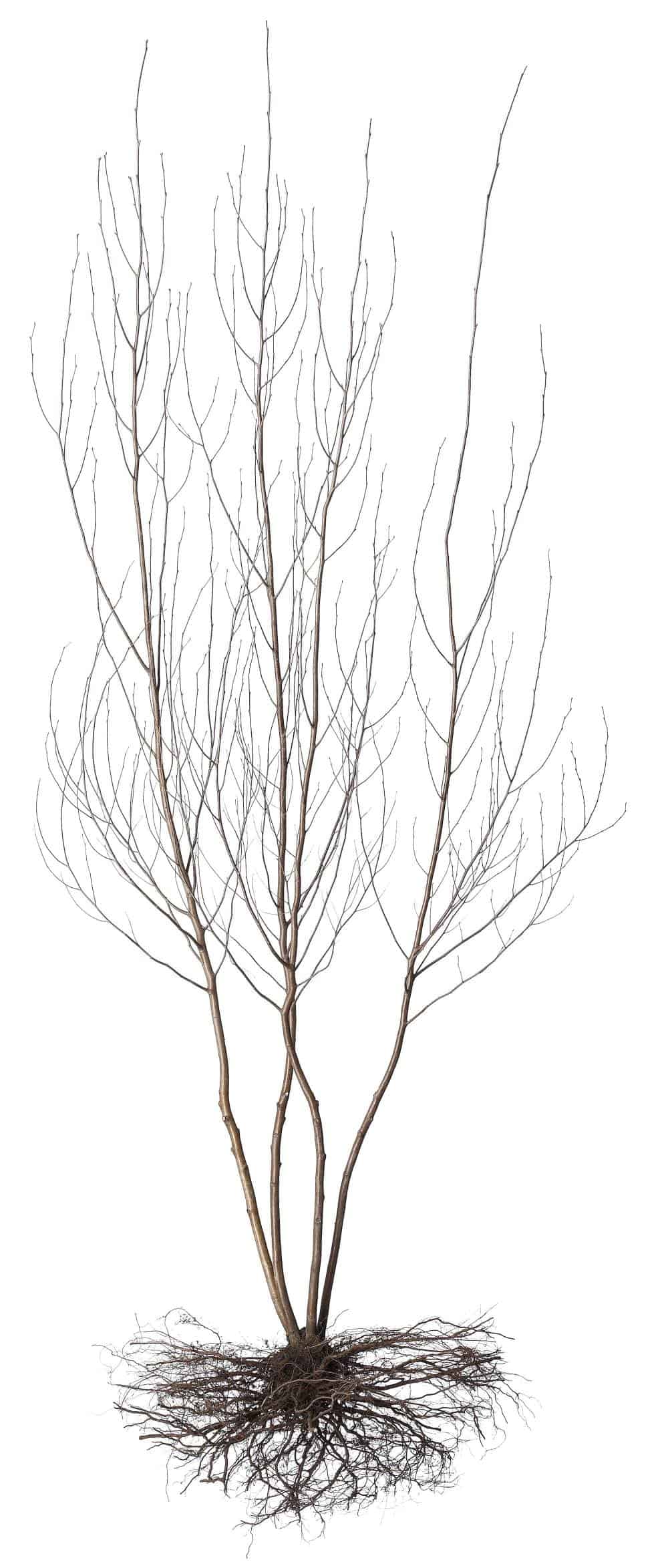
Many homeowners have questions when they decide to plant a tree. Just follow these easy steps when planting shade, ornamental or fruit tree. By using these expert tips as your guide, your tree should thrive and provide years of enjoyment in your yard.
Select the Right Tree for Your Location
Before you plant a tree, you need to decide what kind of tree to want to plant. Do you want a tree for privacy or to provide shade? Maybe your tree is meant to be an ornamental focal point in your yard. Perhaps you want a fruit tree to produce and edible crop of fruit.
Another key consideration in selecting a tree is how much space you have in your yard. According to Jeff Dinslage, president of Nature Hills Nursery, which grows and sells all types of trees, many homeowners buy small trees that become too large for the space available. “Nature Hills lists the mature sizes of all of our plants right on the web page,” said Dinslage. “Compare the mature height and width of the tree to the space available in your planting location. This can prevent the problem of planting a tree in too small a space.”
For some examples of great trees that won’t outgrow small yards and small planting spaces, read Best Trees for Small Yards.
Check Your Hardiness Zone
Find out your USDA Hardiness Zone at https://garden.org/nga/zipzone/ . Then make sure your zone lies within the specified hardiness range for the tree you have selected. Also check out the planting spot at several times of the day. How many hours of sun will your new tree get?
“Most flowering trees require full sun in order to bloom,” said Dinslage. “It is also important to make sure the soil in the planting spot has good drainage. Most trees simply cannot survive where drainage is poor.”
Know When to Plant a Tree
Most people plant trees, shrubs and perennials in the spring. There’s nothing wrong with that, and spring-planted trees quickly adapt to their new locations. Dinslage also recommends planting trees in the fall. Autumn temperatures are cooler, and that helps prevent transplant shock. Plus, the soil is still warm enough to encourage root growth. A fall-planted tree has time to get acclimated to its new growing site, and by springtime it is ready to grow!
How to Plant a Tree: Part 1–Bare Root Trees

Before planting a bare root tree, soak the roots overnight in a tub or bucket of water. This rehydrates the roots and lets the tree know that conditions are favorable for growth. The roots of any bare root plant should not be exposed to sun and wind. If you are not planting your bare root tree right away, keep it covered in a cool, shady spot.
Now Dig the Hole
To plant a bare root tree, dig the hole as deeply as needed to accommodate the depth of the roots without planting the tree too deep into the ground. Make sure the root crown (the widest part of the trunk, where the roots transition to the tree trunk) remains above the soil line.
It is also important to dig the hole wider than is needed to allow the roots some room to grow out evenly in all directions. Hold the tree upright in the hole and fan out the roots. If the roots cannot easily fit into the hole with room to spare, dig the hole wider.
“Save the soil that was excavated from the hole and use the same native soil to backfill the hole around the roots,” said Dinslage of NatureHills.com. Use a shovel to break up the same soil that was dug to make a hole.
Finish the planting process by holding the bareroot tree in the hole. Make sure the root crown (also known as the root flare) is right at ground level and no deeper. Carefully work the soil in and around the root system until the hole is filled back in.
Water the soil completely, saturating the soil at the roots with a hose. Once the water soaks into the soil, it will settle the soil in and around the roots and eliminate air pockets by making sure the soil is intact with all the tree’s roots.
How to Plant a Tree: Part 2–Container-Grown Trees

Then, examine the plant growing in the container. Was it planted too deep in the pot? “Look for the root flare, the widest part of the trunk just above the root system,” said Dinslage. Once the root flare is exposed and visible, place the tree in the hole, and adjust the depth if needed.
Back fill the hole with soil, and water it until all the soil is moistened.
Amend the Soil—or Not?
The question about whether to amend the soil often comes up in discussions about how to plant a tree. Data shows that is not necessary.
Jeff Dinslage at Nature Hills Nursery recommends using the native soil that was removed from the hole. Then spread 2- 3 inches of mulch over the top of the roots. He feels this is much more beneficial for the plant. But he says to avoid excess mulch being piled up against the trunk of the tree.
How to Plant a Tree: The Last Step
“Careful watering is the key to success for newly planted trees,” said Dinslage. “Make sure that the soil does not dry out. This is especially important during the first few weeks until the tree has a chance to grow some new roots.”



Leave a Reply